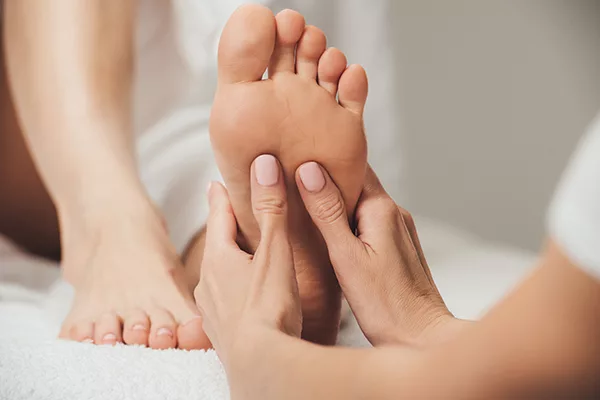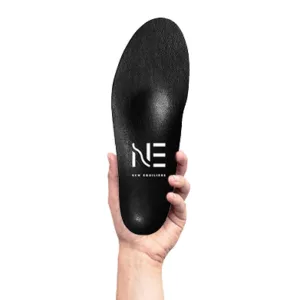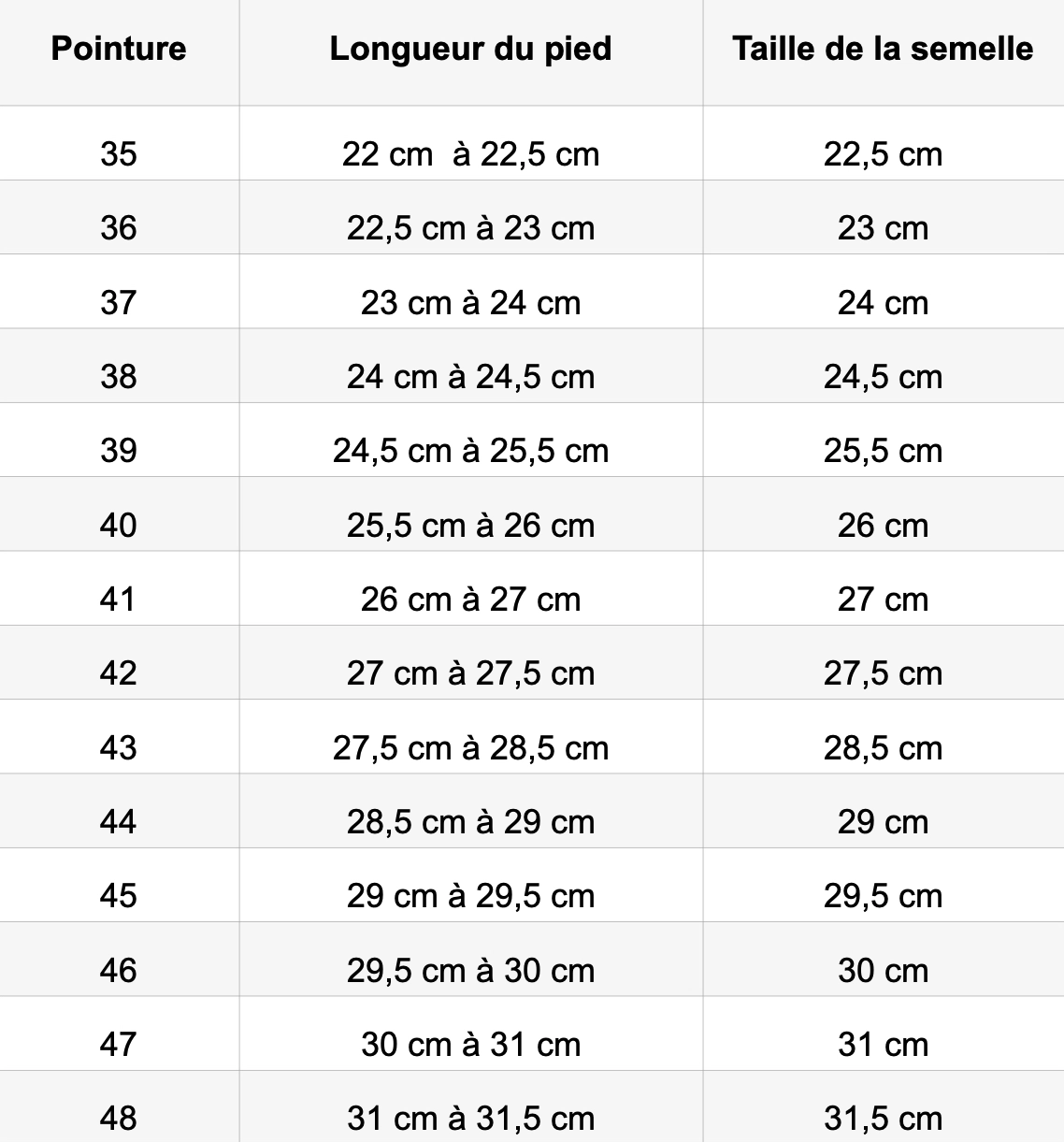Metatarsalgias
the complete guide
- Published on
- By New Equilibre
La métatarsalgie, également connue sous le nom de douleur de l’avant-pied ou douleur métatarsienne, désigne une douleur localisée sous les têtes métatarsiennes, dans la zone de l’avant-pied. Cette pathologie fréquente résulte généralement d’une surcharge ou d’une mauvaise répartition des charges sur l’appui plantaire, provoquant une inflammation des structures sous-jacentes. Elle peut être aggravée par le port de chaussures inadaptées, une déformation (comme un hallux valgus) ou des troubles biomécaniques associés à l’arthrose ou au neurome de Morton.
Très répandue en podologie et orthopédie, cette pathologie est caractérisée par une douleur au pied, particulièrement au niveau des métatarsiens.
Les personnes atteintes de métatarsalgie ressentent souvent un inconfort, une douleur à la marche, voire une sensation de brûlure sous les orteils. L’apparition d’un épaississement tissulaire ou de points de pression mal répartis est également fréquente.

Dans ce guide, nous vous détaillons les causes et les symptômes de la métatarsalgie afin de mieux comprendre cette pathologie et les moyens de la soulager. Vous découvrirez également les semelles New Equilibre, conçues en collaboration avec des podologues et des orthopédistes. Spécialement adaptées pour cibler la métatarsalgie, elles soulagent efficacement la douleur tout en favorisant une posture plus équilibrée.
Vous souffrez de métatarsalgie et pratiquez un sport ? Trouvez en un clic la solution adaptée :
What is metatarsalgia?
La métatarsalgie est une pathologie du pied se manifestant par une douleur située à l’avant du pied, plus précisément sous les têtes métatarsiennes, là où les orteils rejoignent la plante du pied. Elle survient lorsque cette zone est soumise à une pression excessive, entraînant une inflammation des tissus, parfois accompagnée d’un épaississement tissulaire. Ce trouble, souvent lié à une mauvaise répartition des charges, un appui plantaire déséquilibré ou des déformations comme l’hallux valgus, peut devenir très gênant à la marche. Bien que fréquente, notamment chez les personnes actives ou portant des chaussures étroites, la métatarsalgie peut être efficacement soulagée grâce à des solutions ciblées.
What are the symptoms of metatarsalgia?
Les symptômes de la métatarsalgie peuvent varier d’une personne à l’autre, mais ils incluent généralement :
- Pain in the metatarsals: Metatarsalgia is characterized by localized pain in the metatarsal bones, often felt as a burning, tingling, pressure or stabbing pain.
- Increased pain when walking or running: Pain may intensify during activities that place heavy demands on the feet, such as walking, running or prolonged standing.
- Sensation of discomfort: People with metatarsalgia may experience discomfort in the metatarsals, even at rest.
- Pain exacerbated at the end of the day: Pain may worsen over the course of the day, particularly after physical activity or a period of excessive use of the feet.
- Difficulty wearing shoes: Some people find it difficult to wear tight shoes or heels, as this can increase pressure on the metatarsals and aggravate the pain.
- Appearance of redness or swelling: In the most severe cases, redness, swelling or tenderness may appear on the metatarsals.
What causes metatarsalgia?
Metatarsalgia can be caused by several factors, including:
- Overuse of feet: Intense physical activity or excessive stress on the feet can lead to overuse of the metatarsal muscles and joints, resulting in inflammation and pain.
- Poor arch support: Muscle imbalance or arch collapse can lead to uneven weight distribution on the feet, increasing pressure on the metatarsals and causing pain.
- Unsuitable footwear: Wearing shoes that don't properly support the arch of the foot, that are too narrow or too flat, or that exert excessive pressure on the metatarsals, can contribute to the development of metatarsalgia.
- Anatomical anomalies : Some people may have anatomical abnormalities of the foot, such as a flat foot, hammertoes, or a deformity of the metatarsal bones, which can increase the risk of developing metatarsalgia.
- Traumatic injuries : Traumatic injuries, such as stress fractures, sprains or contusions of the metatarsals, can lead to inflammation and persistent pain.
- Overweight : Excess weight can increase pressure on the feet and metatarsals, which can increase the risk of developing metatarsalgia.
It's important to note that metatarsalgia can result from a combination of several of these factors, and can be aggravated by activities that place stress on the feet, such as walking, running, or wearing unsuitable footwear.
Orthopedic insoles to relieve metatarsalgia
The orthopedic insoles are recommended as a non-invasive treatment to relieve metatarsalgia and improve foot comfort. These insoles are designed to provide additional arch support, effectively reduce pressure on the metatarsals and improve foot alignment.
Here's how orthotics can help relieve metatarsalgia:
Pressure distribution : Orthotics are designed to evenly distribute the pressure exerted on the feet during walking or running, reducing the load on the metatarsals and alleviating pain.
Foot alignment correction : Some orthopedic inserts are designed to correct muscular imbalances or anatomical abnormalities of the foot, such as a sunken arch or excessive pronation, which can help reduce pressure on the metatarsals and prevent recurrence of metatarsalgia.
Shock absorption : Orthotics are often made from shock-absorbing materials such as gel or memory foam, which absorb shocks during walking or running, reducing pressure on the metatarsals and easing pain.
New Equilibre insoles have been tested and approved by thousands of users. Their effectiveness is clinically proven. It's easy to order your insoles exclusively from our online store, and regain the comfort your feet deserve.
Free delivery to metropolitan France, within 2 working days. Free returns within 14 days.
How to treat metatarsalgia naturally?
There are several natural methods that can help relieve metatarsalgia and improve foot comfort. Here are a few tips for treating metatarsalgia naturally:
- Resting and elevating the foot: Give your feet adequate rest by avoiding activities that place excessive stress on the metatarsals. Elevate your feet regularly to reduce inflammation and promote blood circulation.
- Ice application : Apply ice to the painful area for 15 to 20 minutes, several times a day. This can help reduce inflammation and relieve pain.
- Stretching exercises : Practice specific stretching exercises to strengthen the foot muscles and improve the flexibility of the metatarsal joints. Exercises such as lifting the toes, rolling a ball under the foot or stretching the calf muscles can be beneficial.
- Wearing suitable footwear: Choose comfortable shoes that offer good arch support and sufficient room for the toes. Avoid shoes with high heels or pointed toes, which exert excessive pressure on the metatarsals.
- Maintaining a healthy weight: Maintaining a healthy weight can reduce pressure on the feet and metatarsals, which can help relieve metatarsalgia.
- Foot massage : Perform regular foot self-massages to relax muscles, improve blood circulation and relieve tension in the metatarsal area.
It's important to note that these natural methods can be effective in relieving the pain associated with metatarsalgia, but they don't necessarily treat the underlying cause of the condition. Orthopedic insoles remain the best treatment for long-term relief of metatarsalgia, and to prevent the pain from recurring.
The different forms of metatarsalgia :
Static metatarsalgia
Static metatarsalgia occurs when the distribution of weight on the metatarsals is disturbed due to muscular imbalance, poor posture or anatomical abnormality. This type of metatarsalgia can result from excessive pressure on the metatarsals due to arch collapse, excessive pronation of the foot or toe misalignment. Symptoms may include pain or discomfort in the forefoot, exacerbated by walking or running.
Traumatic metatarsalgia
Traumatic metatarsalgia occurs as a result of direct or repeated trauma to the metatarsal region. This can include injuries such as stress fractures, contusions or sprains of the metatarsals, resulting in inflammation and local pain. High-impact activities, such as running on hard surfaces or jumping, as well as wearing unsuitable footwear, can contribute to this type of metatarsalgia.
Dystrophic metatarsalgia
Dystrophic metatarsalgia is associated with structural changes in the soft tissue and bone in the metatarsal region. These may include painful calluses, bony deformities such as bunions (hallux valgus), or inflammatory conditions such as osteoarthritis. These changes can lead to increased pressure on the metatarsals, causing pain and discomfort.
Neurological metatarsalgia
Neurological metatarsalgia is caused by irritation or damage to the nerves that innervate the metatarsal region. This can result from conditions such as Morton's neuroma, an inflammation of the interdigital plantar nerve that causes stabbing or burning pain between the toes. Symptoms may include pain, numbness, tingling or burning in the affected area.
Who to see about metatarsalgia?
If you suffer from metatarsalgia, we recommend that you consult a podiatrist or orthopedist specializing in foot pathologies. You can contact our team of experts by e-mail via contact@newequilibre.com for advice on your situation.

New Equilibre
Professionnels de la santé spécialisés dans la fabrication de semelles orthopédiques depuis plus de 30 ans. Une expertise prouvée auprès milliers d'utilisateurs New Equilibre et patients en cabinet d'orthopédie.



